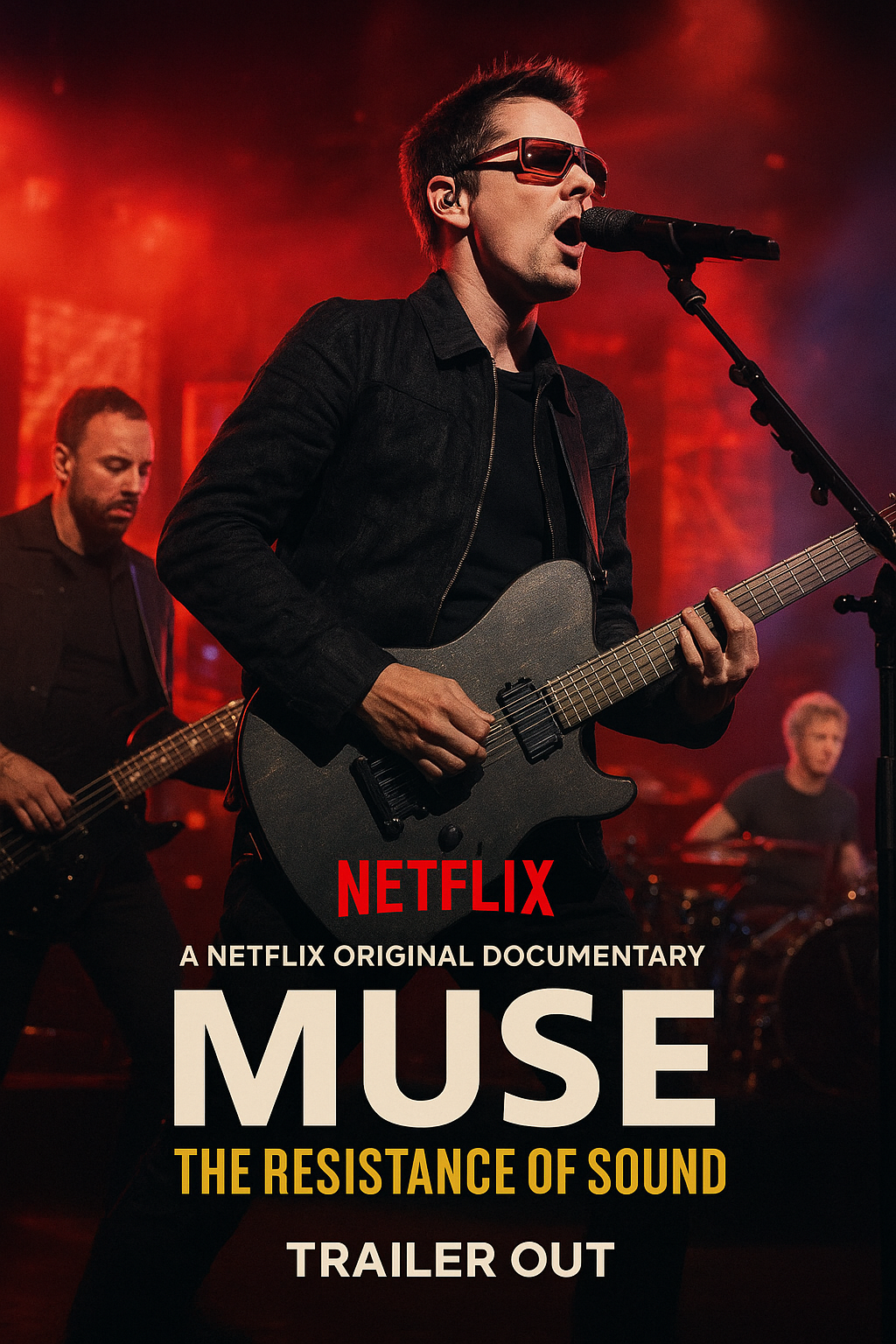
Muse has long stood as one of the most innovative and dynamic rock bands of the 21st century, pushing boundaries with their fusion of alternative rock, electronic experimentation, and symphonic grandeur. Now, Netflix dives deep into the history, artistry, and evolution of the band with a new documentary series simply titled Muse: The Resistance of Sound. The series captures the band’s journey from small-town beginnings in Teignmouth, England, to their rise as one of the most spectacular live acts in the world. Through candid interviews, unseen footage, and high-definition concert moments, Netflix delivers an immersive experience that redefines what a rock documentary can be.
From the very first episode, viewers are pulled into Muse’s early struggles—playing in tiny venues, refining their sound, and facing rejection before finally gaining traction. The band’s lead singer and guitarist, Matt Bellamy, shares rare insights into his creative process, from his fascination with dystopian themes to his complex layering of orchestral elements with modern rock. The documentary doesn’t shy away from exploring the band’s internal dynamics either, revealing the shared drive and occasional friction that fueled their creativity across decades.
What sets this series apart is its emotional depth. Netflix frames Muse not merely as rock icons but as artists grappling with fame, perfectionism, and the desire to stay authentic in an ever-changing industry. Bassist Chris Wolstenholme opens up about his struggles with addiction during the height of the band’s success, while drummer Dominic Howard discusses the mental toll of constant touring. The transparency of these moments brings humanity to the band’s often larger-than-life image.
Each episode also dives into the creation of Muse’s most iconic albums—from the cinematic scope of Origin of Symmetry to the politically charged Drones. Fans get to witness Bellamy in the studio layering vocals and synthesizers, experimenting with unconventional sounds, and composing melodies that straddle the line between chaos and beauty. The production sequences are a masterclass in creative control and risk-taking, offering a rare peek into the meticulous craftsmanship behind the music.
A standout portion of the documentary focuses on Muse’s legendary live performances. From their mind-bending light shows to Bellamy’s gravity-defying stage antics, Netflix captures the adrenaline, precision, and spectacle that define the band’s concerts. Footage from Glastonbury, Wembley Stadium, and global tours is presented in stunning 4K detail, reminding viewers why Muse is often hailed as one of the best live acts on the planet.
Beyond music, the documentary explores the philosophical and political undertones that drive Muse’s lyrics. Bellamy’s interest in surveillance, artificial intelligence, and government control is dissected through a mix of interviews and archival material. The filmmakers highlight how songs like “Uprising,” “Knights of Cydonia,” and “The Globalist” resonate with a world increasingly shaped by technology and social unrest. Muse emerges as more than entertainers—they are cultural commentators predicting the future through sound.
Cinematically, Muse: The Resistance of Sound is breathtaking. The use of shadow, light, and slow-motion imagery mirrors the drama and emotional tension in Muse’s music. Each transition feels like a symphony in itself—rising crescendos, moments of silence, and bursts of visual energy. The editing captures the rhythm of their songs while maintaining a documentary’s authenticity, resulting in a seamless blend of storytelling and performance.
Critics have already praised the documentary for its honesty and aesthetic ambition. Fans old and new have taken to social media to share how deeply they connect with the portrayal of the band’s journey. The series doesn’t just tell a story—it invites viewers to feel the electricity of creation, the pain of pressure, and the euphoria of artistic success. It’s both a celebration and an introspection of what it means to stay relevant while pushing boundaries.
On October 26, 2025, Muse: The Resistance of Sound officially premiered on Netflix worldwide, instantly sparking conversation across fan communities and music circles. Within hours, it trended globally, proving that the band’s influence still resonates powerfully after more than two decades in the industry. For those who grew up with their sound, it’s a nostalgic journey; for newcomers, it’s an eye-opening introduction to one of the most visionary acts in rock history.
What makes the series even more compelling is its balance between myth and reality. It deconstructs the larger-than-life persona of Muse without stripping away the magic. The band’s vulnerability, humor, and intellect come through in unscripted moments—whether Bellamy is joking about conspiracy theories or reflecting on how his childhood shaped his musical obsessions. These moments bring warmth and relatability to a band often seen as untouchable.
By the final episode, Netflix’s documentary feels less like a retrospective and more like a living, breathing portrait of artistic evolution. It leaves viewers inspired by how far imagination can go when coupled with persistence and collaboration. The story of Muse becomes a metaphor for creative resistance in a world that often demands conformity.
Muse: The Resistance of Sound isn’t just for fans—it’s for anyone who believes in the power of music to challenge, provoke, and unite. Netflix has crafted a visual symphony that does justice to Muse’s sonic universe, offering a rare, cinematic invitation into the mind of one of rock’s most inventive bands. As the credits roll and Bellamy’s voice fades out over an acoustic reprise of “Starlight,” it’s impossible not to feel moved by the journey—both theirs and ours.


